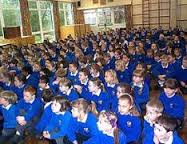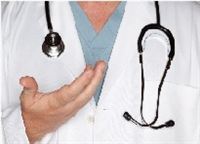- Home Page
- Somerset Profile
- Local Community Network Profiles
- Electoral Division Profiles
- Joint Strategic Needs Assessment
- Census 2021
- Census 2011
- People & Neighbourhoods
- Health and Wellbeing
- Crime & Community Safety
- Economy & Jobs
- Education, Skills and Learning
- Environment
- Housing
- Travel and Access
- SINePost
- Children & Young People
- Older People
- Somerset Maps
- Somerset Geographies
- County Council Election Results
- Contact us
SINePost newsletter - August 2022

In this issue:
- Fire statistics
- School exclusions
- Universal Credit claimants
- School pupil characteristics
- Conception statistics
- Births statistics
- Parents' Country of Birth data
- Obesity statistics
1. Fire statistics
Devon and Somerset Fire and Rescue Service (DSFRS) attended 3,708 fire incidents in 2021/22, according to latest figures from the Home Office. This is the lowest figure on record and continues a downward trend since the time series began in 2001/02. The number of dwelling fires was also the lowest on record, with 864.
DSFR also attended 6,278 fire false alarms. This is the highest number of fire false alarms since 2008/09. There were an additional 6,622 non-fire incidents, giving a total of 16,608 incidents for the year, the highest number since 2017/18.
For the full dataset, see: https://www.gov.uk/government/statistical-data-sets/fire-statistics-data-tables
2. School exclusions
There were a total of 49 permanent exclusions of pupils from state-funded primary, secondary and special schools in Somerset during the 2020/21 academic year, according to figures published by the Department for Education. This represented 0.07% of all pupils, down from 0.09% in the previous year, but above the national average rate of 0.05% of pupils.
During 2019/20, there were a total of 5,556 fixed-period exclusions in Somerset state-funded schools, representing a rate of 7.78 per 100 pupils on roll. This was above the national average rate of 4.25, and an increase from the previous year’s rate of 6.77.
Exclusions data can be explored interactively at: https://explore-education-statistics.service.gov.uk/
 3. Universal Credit Claimants
3. Universal Credit Claimants
The number of individuals receiving jobseekers support through Universal Credit (UC) in Somerset continue to decrease month-on-month according to latest figures from the Department for Work and Pensions (DWP). The figure for June 2022 was 7,915, nearly 5% lower than the May figure.
The latest figure remains higher that the pre pandemic figure of 7,370 in March 2020 but lower than the peak figure of 16,935 in August 2020.
For the full dataset, see: https://www.nomisweb.co.uk/reports/
 4. School pupil characteristics
4. School pupil characteristics
There are a total of 80,244 school pupils in Somerset attending state-funded and independent schools in 2021/22, according to latest figures from the Department for Education.
The figures indicate that 10.3% of pupils (8,255 pupils) attend an independent school, representing the second highest rate in the South West region (behind only Bath and North East Somerset).
19.6% of state-funded primary school pupils and 18% of secondary school pupils in Somerset are eligible for Free School Meals. These figures have increased over recent years, from 10.6% and 9.6% respectively in 2015/16. The percentages of FSM eligible students in Somerset are slightly higher than the regional figures for the South West but are below the national figures for England.
To explore the data, see: https://explore-education-statistics.service.gov.uk/data-tables/school-pupils-and-their-characteristics
 5. Conception statistics
5. Conception statistics
The number of conceptions to women aged under 18 in Somerset decreased again in 2020, continuing a 14-year trend of decreasing numbers. This is according to newly published figures from the Office for National Statistics (ONS), which show that national rates have also decreased in 2020. The rate of conceptions to women aged under 18 in Somerset is lower than the rate for England & Wales, but marginally higher than the rate for the South West region.
There were a total of 100 conceptions to women aged under 18 in Somerset, representing a rate of 11.0 per 1,000 women in the age group. Within Somerset, rates were highest in South Somerset – at 13.4 per 1,000 – followed by Somerset West & Taunton (10.9 per 1,000), Sedgemoor (9.7 per 1,000), and Mendip (9.1 per 1,000).
The overall conception rate in Somerset decreased in 2020 for the fourth successive year, to a rate of 74.6 per 1,000 women – a total of 6,416 conceptions. This rate is above that of both the South West region (68.2 per 1,000) and England & Wales as a whole (73.4 per 1,000).
For the full dataset, see: https://www.ons.gov.uk/peoplepopulationandcommunity/birthsdeathsandmarriages/
 6. Births statistics
6. Births statistics
The number of live births in Somerset increased in 2021, following five consecutive years of decline, according to figures from the Office for National Statistics (ONS). This represented the lowest annual figure for at least ten years.
There were a total of 5,063 live births during 2021, up from 4,908 births during 2020. The 2020 remains 12% lower than a recent peak of 5,764 births during 2011.
The total fertility rate (TFR) in Somerset increased from 1.72 to 1.75 children per woman in 2021. The highest TFR in 2021 was in South Somerset (1.80) and Sedgemoor (0.80), with the lowest in Somerset West & Taunton (1.65).
Trends in numbers of births and fertility rates in Somerset are mirroring national trends, with 2021 representing the first year of increasing numbers following years of decline. The 2021 TFR of 1.75 children per woman for Somerset is higher than the England and Wales rate of 1.61.
For the full dataset, see: www.ons.gov.uk/peoplepopulationandcommunity/birthsdeathsandmarriages/
.pdf%20-%20Adobe%20Reader_2013-03-28_11-48-53.png) 7. Parents' Country of Birth data
7. Parents' Country of Birth data
There were 755 births in Somerset in 2021 to non-UK born mothers, according to figures from the Office for National Statistics. This figure represents 14.9% of all births in Somerset in this period, a decrease from 15.2% in the previous year. Nationally, 28.8% of all births in England and Wales were to non-UK born mothers in 2021.
Of the 755 Somerset babies born to non-UK mothers during 2021, a total of 497 were to mothers born in Europe; 135 were to mothers from the Middle East and Asia; 68 from Africa; and 55 from the rest of the world.
Within Somerset, Sedgemoor and Somerset West & Taunton had the highest proportion of births to non-UK born mothers, with 16.9% of births in each area. Mendip had the lowest proportion, with 10.9%.
See: www.ons.gov.uk/peoplepopulationandcommunity/birthsdeathsandmarriages/livebirths
 8. Obesity statistics
8. Obesity statistics
New updates to the Office for Health Improvement & Disparities’ (OHID) Fingertips public health data tool show an estimated 62.2% of adults in Somerset as being classified as overweight or obese in 2020/21. This is marginally higher than the previous year’s figure of 61.9% but lower than a peak of 67.7% in 2017/18. The rate for Somerset is slightly lower than the national average of 63.5%.
Looking at just those who are classified as obese, the figure for Somerset is estimated at 24.2%. This is again slightly lower than the national figure (25.3%), and again represents a small increase on the previous year’s figure.
To explore the data interactively, see: https://fingertips.phe.org.uk/profile/
And finally...
- If you have any news or articles you’d like to share
- If any of the links in this newsletter don’t work
- If you would like to subscribe or unsubscribe from the SINePost email alert
Please email AHolly@somerset.gov.uk
 Read our SINePost monthly newsletter
Read our SINePost monthly newsletter
Did you know?
Life expectancy is 80.5 (+-0.3yrs) years for men and 84.3 (+-0.3yrs) years for women in Somerset which is higher than national averages. - Life Expectancy

